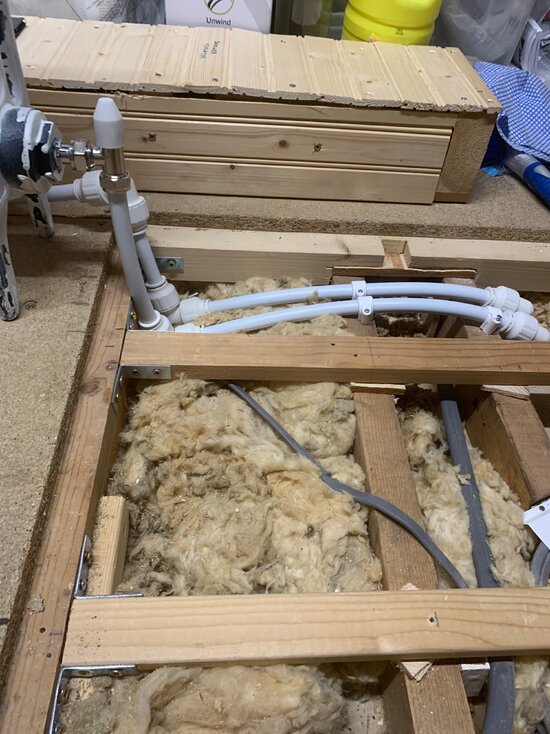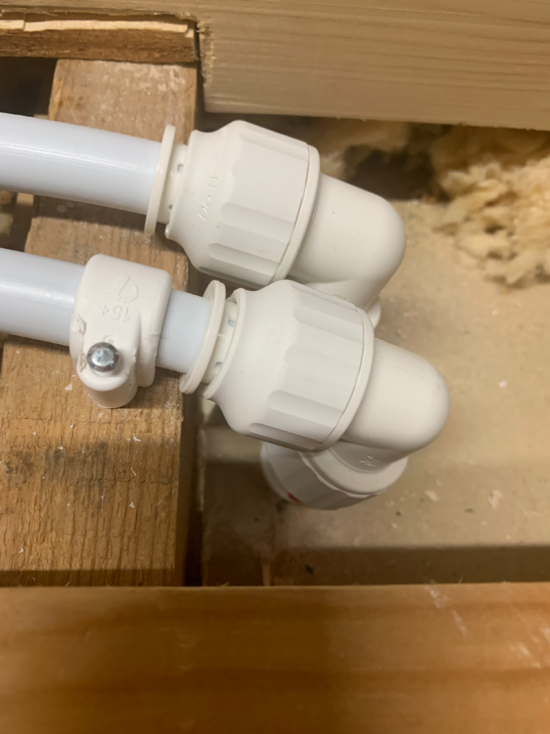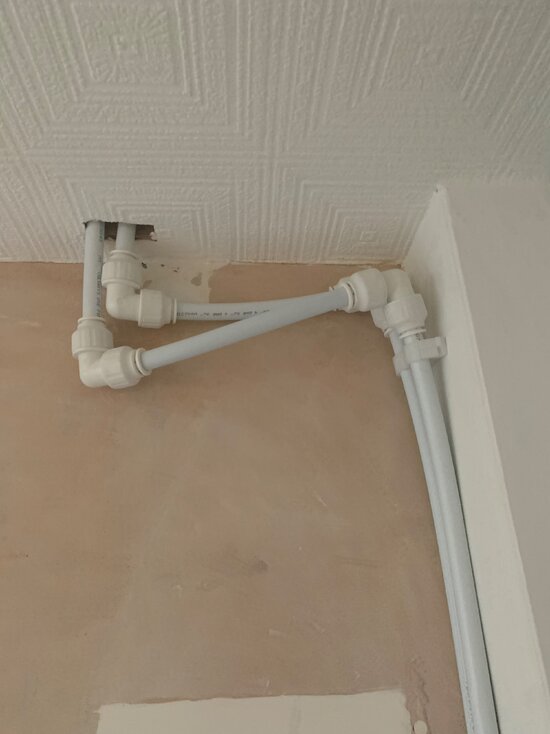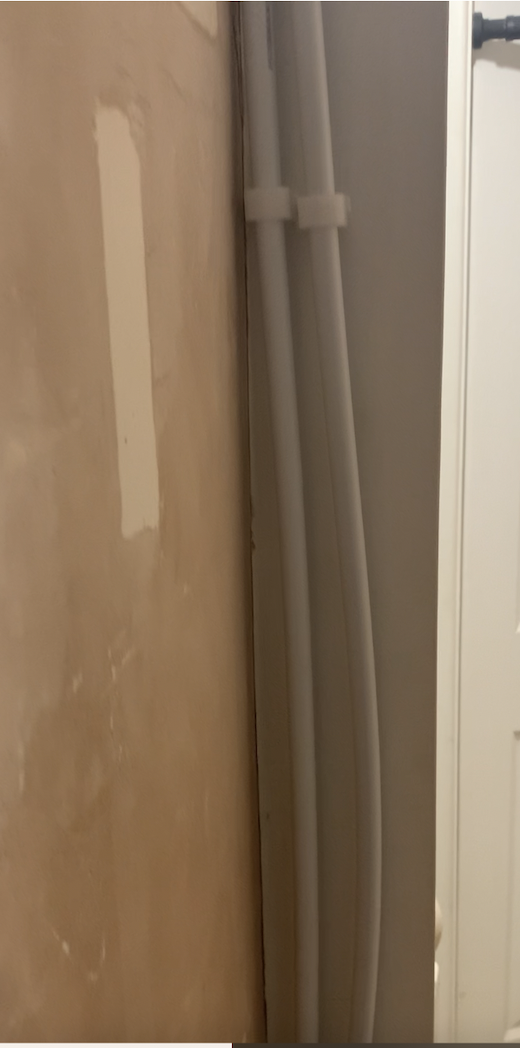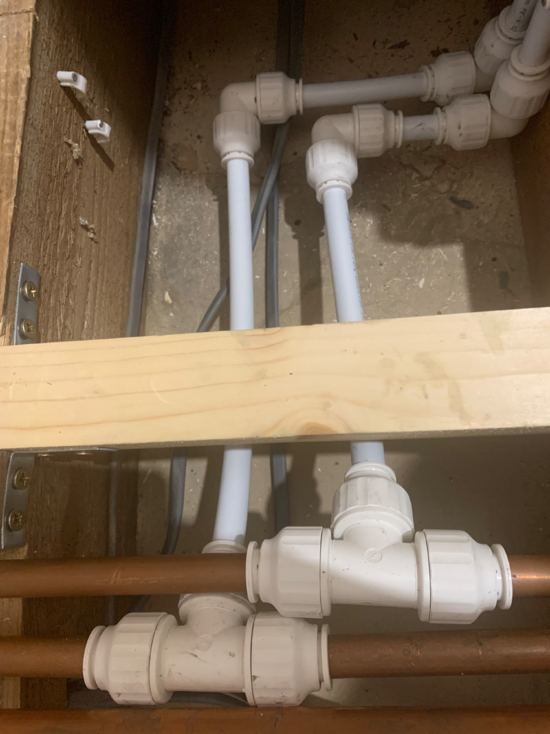I must say I would not have carried out that installation and been happy to leave it like that. I know this is an old thread, but I wish to comment for future reference as this is my industry and I would find it deeply disappointing if this kind of standard became acceptable. Whoever installed this is not serious competition to me, but I might take more than 3 hours. I am not going to comment on price as there are so many variables.
Not a fan of plastic pipe myself but it can be certainly be done more tidily than this. There are times when plastic is more appropriate than copper and I do use it from time to time. My main issues with it is that, to do it well is not necessarily easier than copper as it needs more support, nor is it necessarily cheaper than copper when you consider the fittings are expensive. I think most of the regulars on this forum would have done a better job if they had been asked to do this installation in PEX.
Rad2 - is the valve plumb or at a slight angle to the vertical? It would look better if it were plumb, but this is merely an aesthetic issue if the pipe is happy as it is.
Rad1 - why is this only half-painted?
Rad6 - the vertical pipes are the wrong length. There is no reason to have the fittings sitting in the void between the joists and then have to come back up to pass over the next joist. Also the horizontal pipe is the wrong length as the 90° bend is being tried to be pulled out of its natural angle (accommodated, luckily, by the natural flexibility of the pipe).
Rad4 - Collet clips are not mandatory as far as I am aware (unless this manufacturer specifies them), but I would have liked to see them used here, given the proximity of that release ring to the joist.
Rad3 - Why not cut the pipes to a length that allows them to sit parallel to the ceiling and to one another?
Rad7 - Unless the manufacturer specifies a certain clipping distance and this has not been adhered to, while one might like to see more clips, it may be a matter of opinion.
Rad9 - Not bad for underfloor pipework as it doesn't really need to look pretty, but would have been better to find another way of supporting the pipe than to sit it on the plasterboard. A noggin (basic method), or Munsen or similar clips attached to a threaded rod (advanced method), screwed to the sides of the joist would have been better. And I'm not happy with the proximity of those hot pipes to the electric cable when even a scrap of wood could have been used to keep them from touching. I'm not too worried about the bend in the pipe leaving the tee as it seems to me just the way the pipe wants to bend : could be tidier, but I don't think it's a technical problem.
As others have said, the Consumer Rights Act applies. With regard to the choice of pipe manufacturer, the installer is free to choose this (unless you agreed on a specific brand) but you have your consumer rights if the installation does not last 'a reasonable time'. The aesthetics of the job would probably not pass muster if this were an NVQ assessment in a City and Guilds college, so it could be argued that this is not 'reasonable quality', but I suppose it depends on what was discussed. Please don't explain it to me as I'm not the one you need to convince (in the nicest possible way, I'm not really interested in taking sides, I'm just commenting on the work itself).
As far as the flushing issue is concerned, the gold standard for any new radiator on an existing installation is cold flush, drain, hot flush with a system cleanser, drain, and refill. In practice, I don't insist on this standard most of the time and many customers, particularly with older systems, when we discuss the issues, decide to not bother, particularly when I can achieve a saving by freezing off a section, working, and reconnecting without draining most of the system at all. The main issues are that oil in the radiator from manufacture (and left in to protect from rust?) can damage rubber seals in the system, and flux in soldered joints (doesn't apply to you) can promote corrosion. As the rad manufacturer suggested flushing the 'system' they are not suggesting flushing the radiator before installation, so are only underlining what is already considered to be best practice in the industry.
One point of interest remains : why do you want a radiator in a loft?



